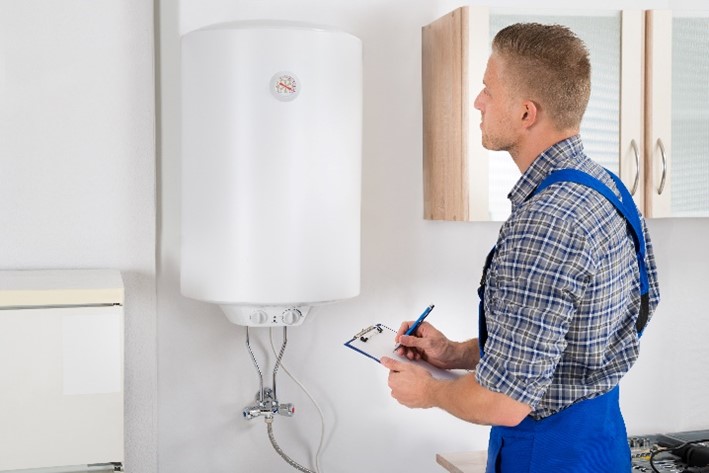Key Maintenance Tips for Your Home's Hot Water SystemSpecialist Guidance for Caring for Your Home's Hot Water System
Key Maintenance Tips for Your Home's Hot Water SystemSpecialist Guidance for Caring for Your Home's Hot Water System
Blog Article
Are you hunting for facts concerning Tips on Maintaining a Water Heater?

Hot water is essential for day-to-day convenience, whether it's for a revitalizing shower or cleaning meals. To guarantee your warm water system runs efficiently and lasts longer, regular maintenance is essential. This short article supplies functional ideas and insights on exactly how to preserve your home's hot water system to avoid disturbances and pricey repair services.
Introduction
Maintaining your home's hot water system could appear complicated, but with a couple of straightforward actions, you can ensure it operates efficiently for several years to find. This guide covers everything from recognizing your warm water system to DIY upkeep ideas and understanding when to hire professional aid.
Importance of Keeping Your Warm Water System
Regular upkeep not just extends the life-span of your warm water system but additionally ensures it operates successfully. Disregarding upkeep can cause reduced efficiency, higher power bills, and also early failure of the system.
Indicators Your Hot Water System Demands Upkeep
Knowing when your warm water system needs attention can stop major concerns. Watch out for indicators such as irregular water temperature, odd noises from the heating system, or rusty water.
Purging the Water Heater
Purging your water heater gets rid of sediment buildup, enhancing efficiency and extending its life.
Checking and Changing Anode Rods
Anode rods protect against corrosion inside the container. Examining and changing them when worn out is vital.
Complex Concerns Requiring Expert Help
Examples consist of major leakages, electrical issues, or if your hot water heater is continually underperforming.
Routine Specialist Maintenance Perks
Specialist maintenance can consist of thorough evaluations, tune-ups, and making sure conformity with safety requirements.
Evaluating and Readjusting Temperature Setups
Readjusting the temperature settings makes certain optimal efficiency and safety.
DIY Tips for Upkeep
You can perform a number of upkeep jobs yourself to keep your warm water system in leading condition.
Checking for Leaks
Consistently evaluate pipes and connections for leakages, as these can lead to water damage and greater costs.
Understanding Your Hot Water System
Before diving right into upkeep jobs, it's helpful to understand the basic elements of your warm water system. Commonly, this includes the water heater itself, pipes, anode rods, and temperature level controls.
Month-to-month Upkeep Tasks
Normal monthly checks can help catch minor problems prior to they rise.
Examining Stress Alleviation Valves
Testing the pressure relief valve ensures it works properly and stops extreme stress build-up.
Shielding Pipelines
Shielding warm water pipelines lowers warmth loss and can conserve power.
When to Call a Specialist
While do it yourself upkeep is beneficial, some concerns call for specialist experience.
Verdict
Normal upkeep of your home's warm water system is necessary for performance, durability, and cost savings. By following these suggestions and understanding when to look for specialist aid, you can make certain a reliable supply of hot water without unexpected disruptions.
How to Maintain an Instant Hot Water Heater
Before tinkering with your hot water heater, make sure that it’s not powered on. You also have to turn off the main circuit breaker and shut off the main gas line to prevent accidents. Also turn off the water valves connected to your unit to prevent water from flowing into and out of the appliance. 2. When you’re done, you have to detach the purge valves’ caps. These look like the letter “T” and are situated on either side of the water valves. Doing so will release any pressure that has accumulated inside the valves while at the same time avoid hot water from shooting out and burning your skin. 3. When the purge valves’ caps are removed, you have to connect your hosing lines to the valves. Your unit should have come with three hoses but if it didn’t, you can purchase these things from any hardware or home repair shops. You can also get them from retail stores that sell water heating systems. Read the user’s manual and follow it to complete this task properly. When the hosing lines are connected, open the purge port’s valves. 4. You should never use harsh chemical cleaners or solutions when cleaning your unit. Make use of white vinegar instead. It should be undiluted and you’ll probably use about 2 gallons. 5. Now flush your water heater. This task should probably take about 40 minutes. We can’t give you specific directions for this because the procedure is carried out depending on the type, model and brand of your heater. With that being said, refer to the user’s manual. 6. When you’re done draining the unit, you have to turn off the purge port valves again. Remove the hosing lines that you earlier installed on each of the water valves. Put the valve caps (purge port) back in their respective places and be very careful so as not to damage the rubber discs that are found inside these caps. 7. Now that everything’s back in place, check your user’s manual again to find out how to reactivate your water heating system. 8. Once it is working, turn one of your hot water faucets on just to let air pass through the heater’s water supply pipes. Leave the tap on until water flows smoothly out of it. https://www.orrplumbing.com/blog/2014/september/how-to-maintain-an-instant-hot-water-heater/

I came across that blog post about Tips on Maintaining a Water Heater when surfing around the web. I beg you take the opportunity to share this blog post if you appreciated it. I take joy in your readership.
Click Here Report this page